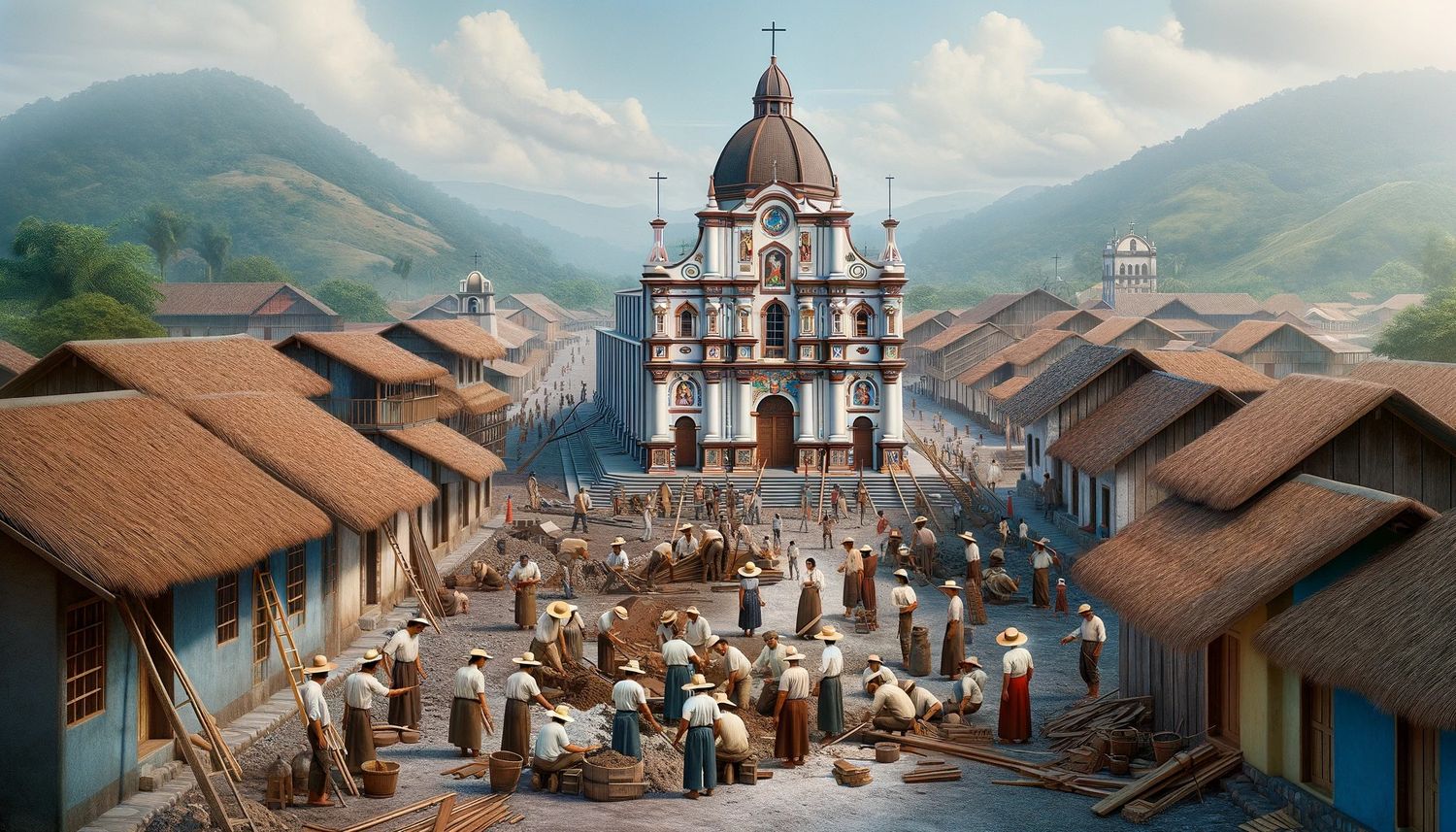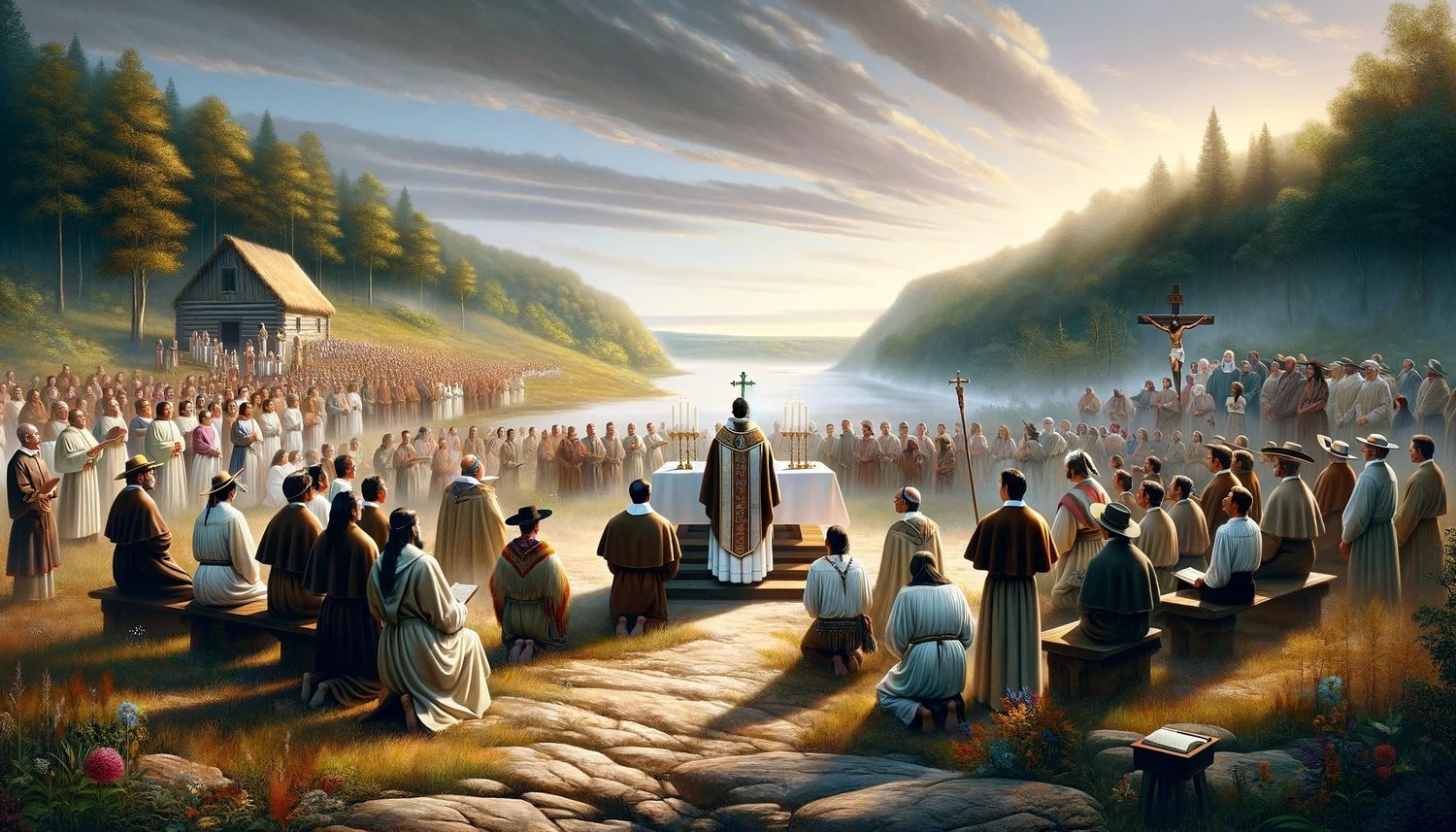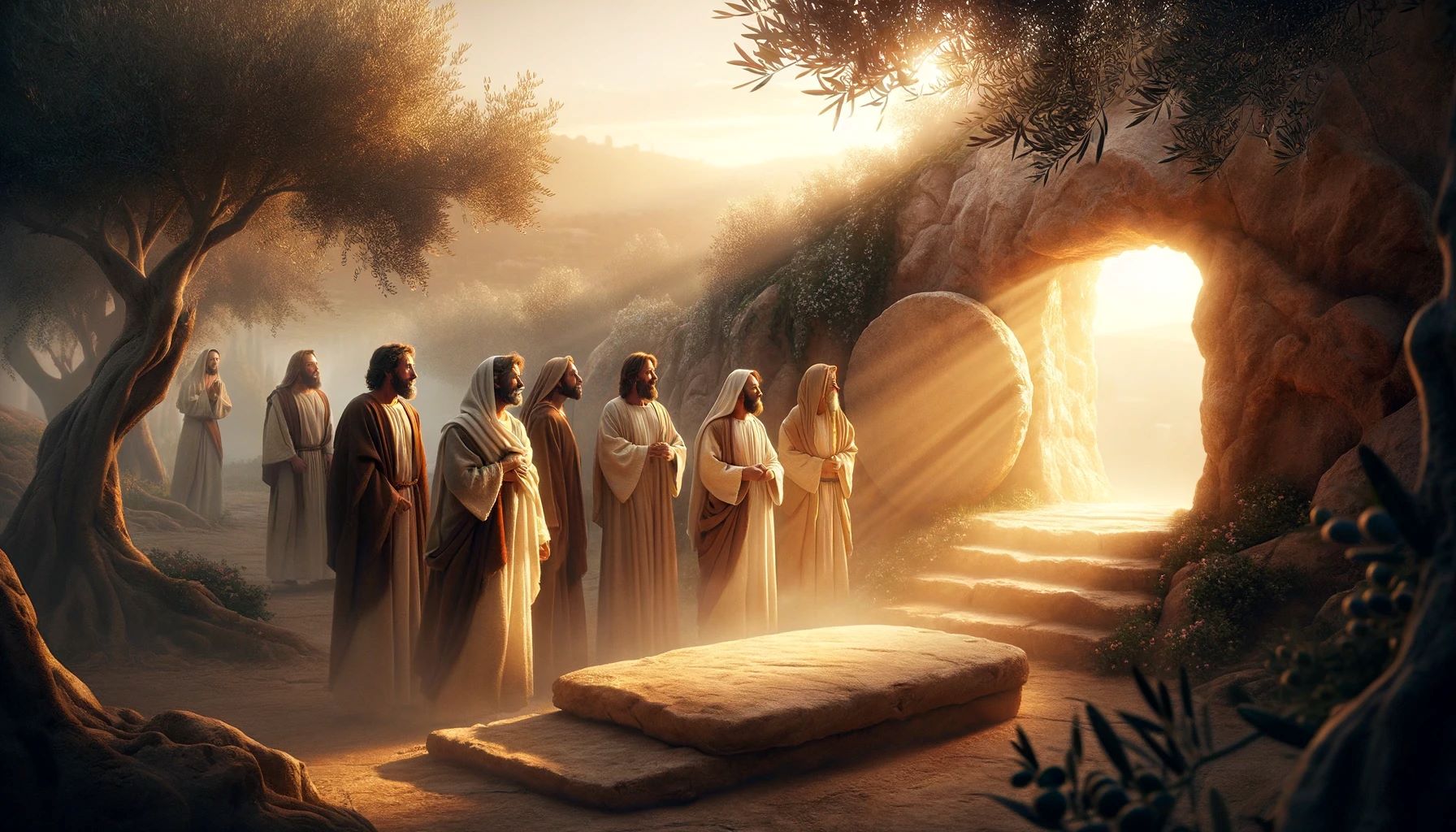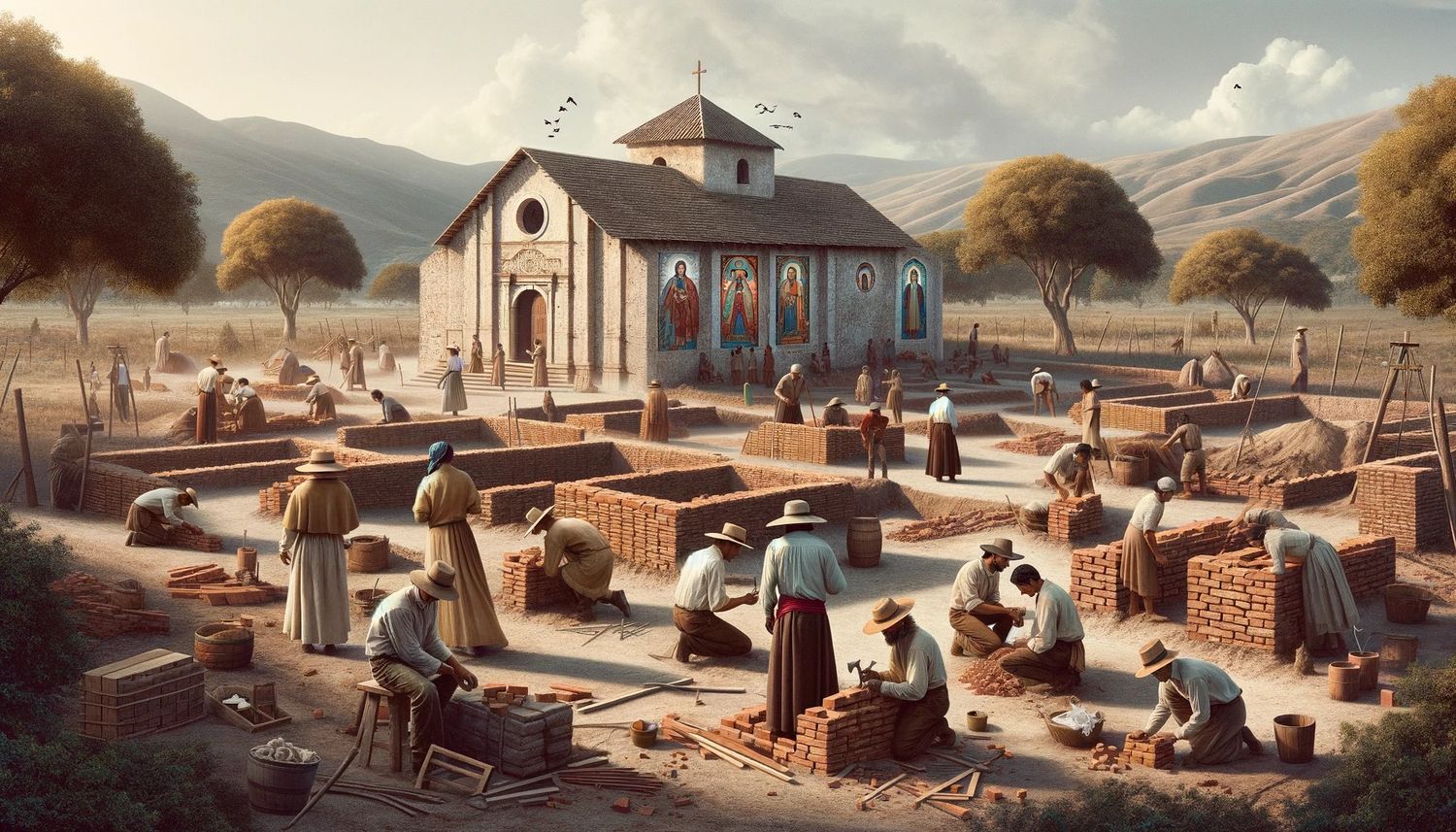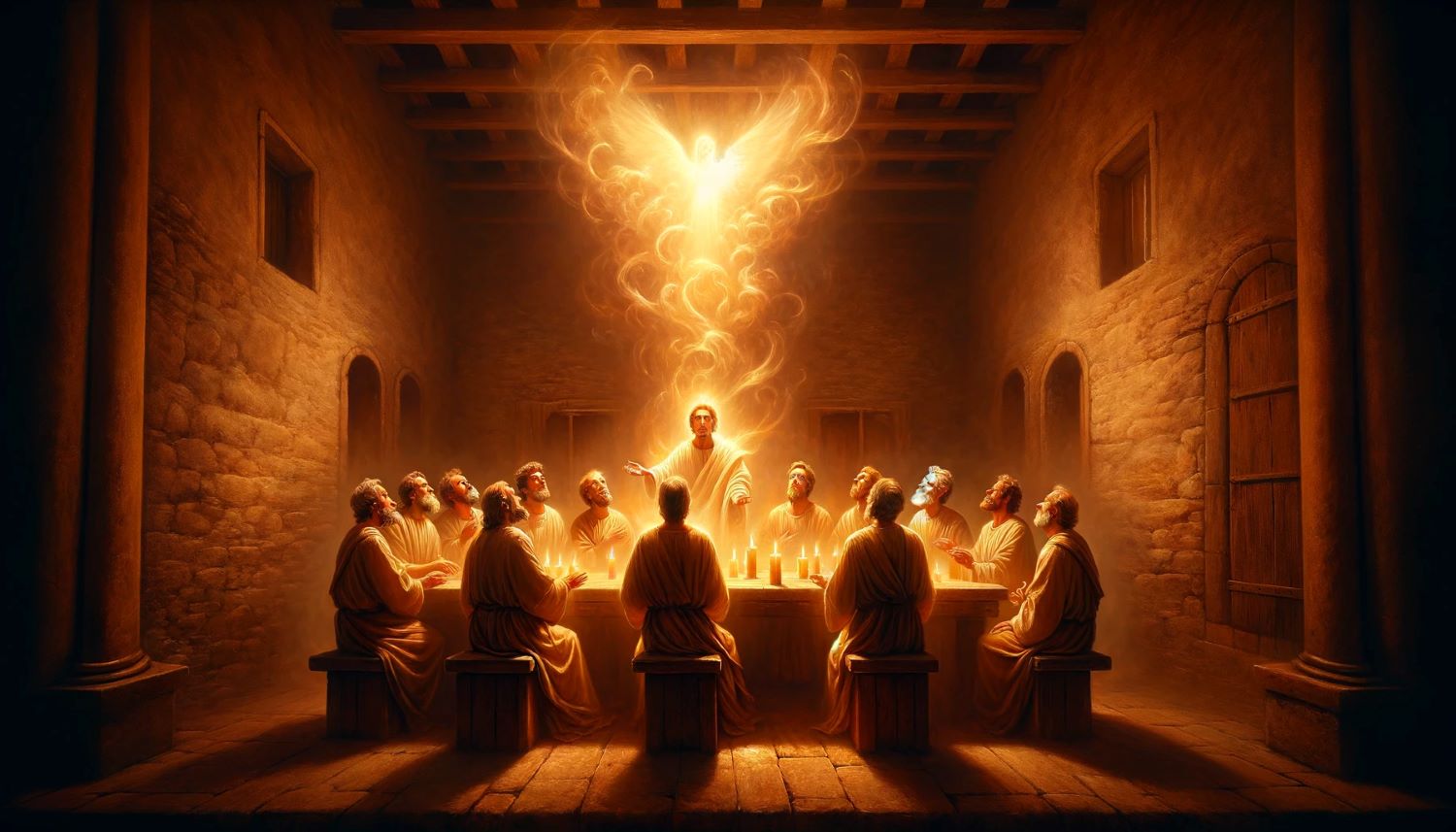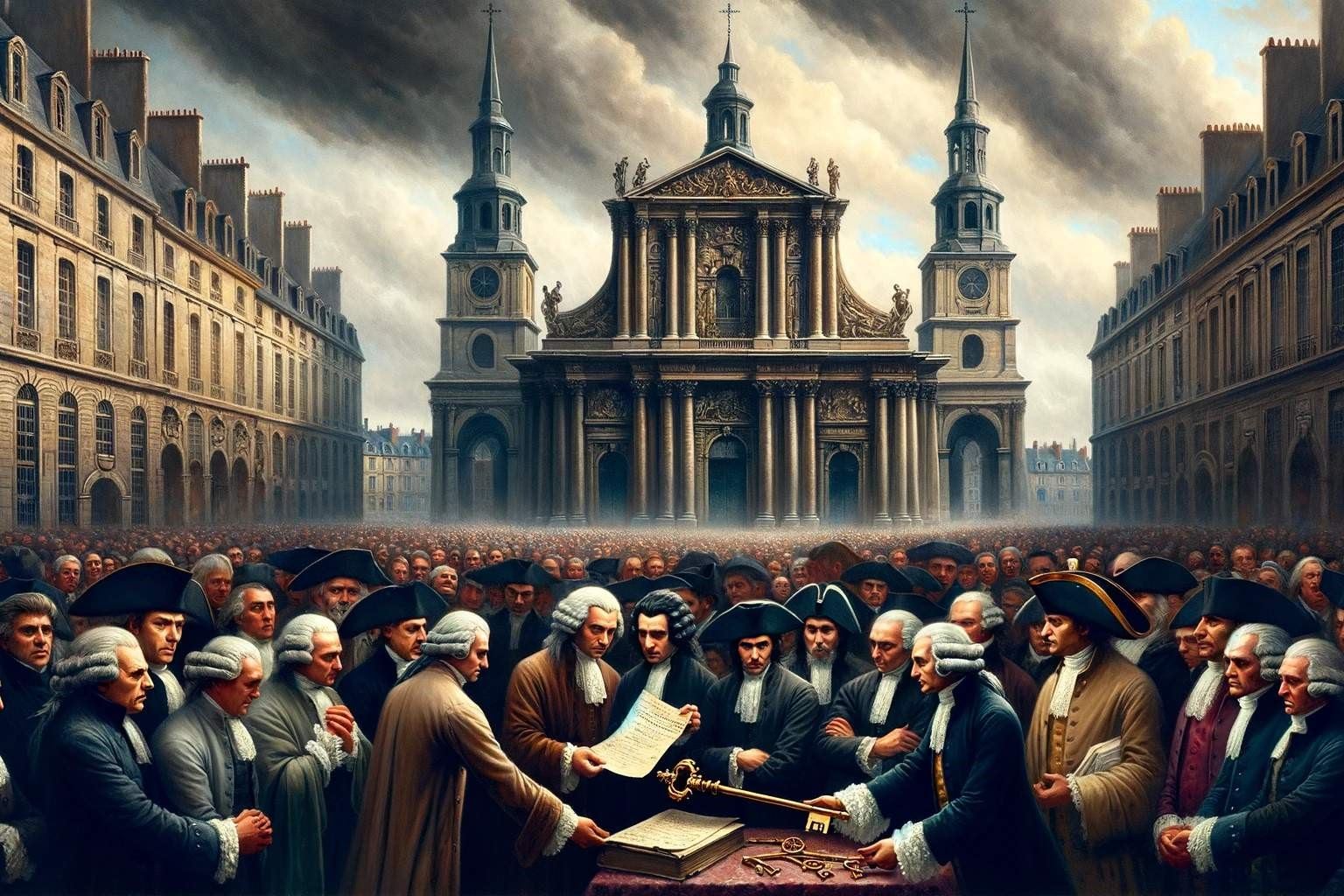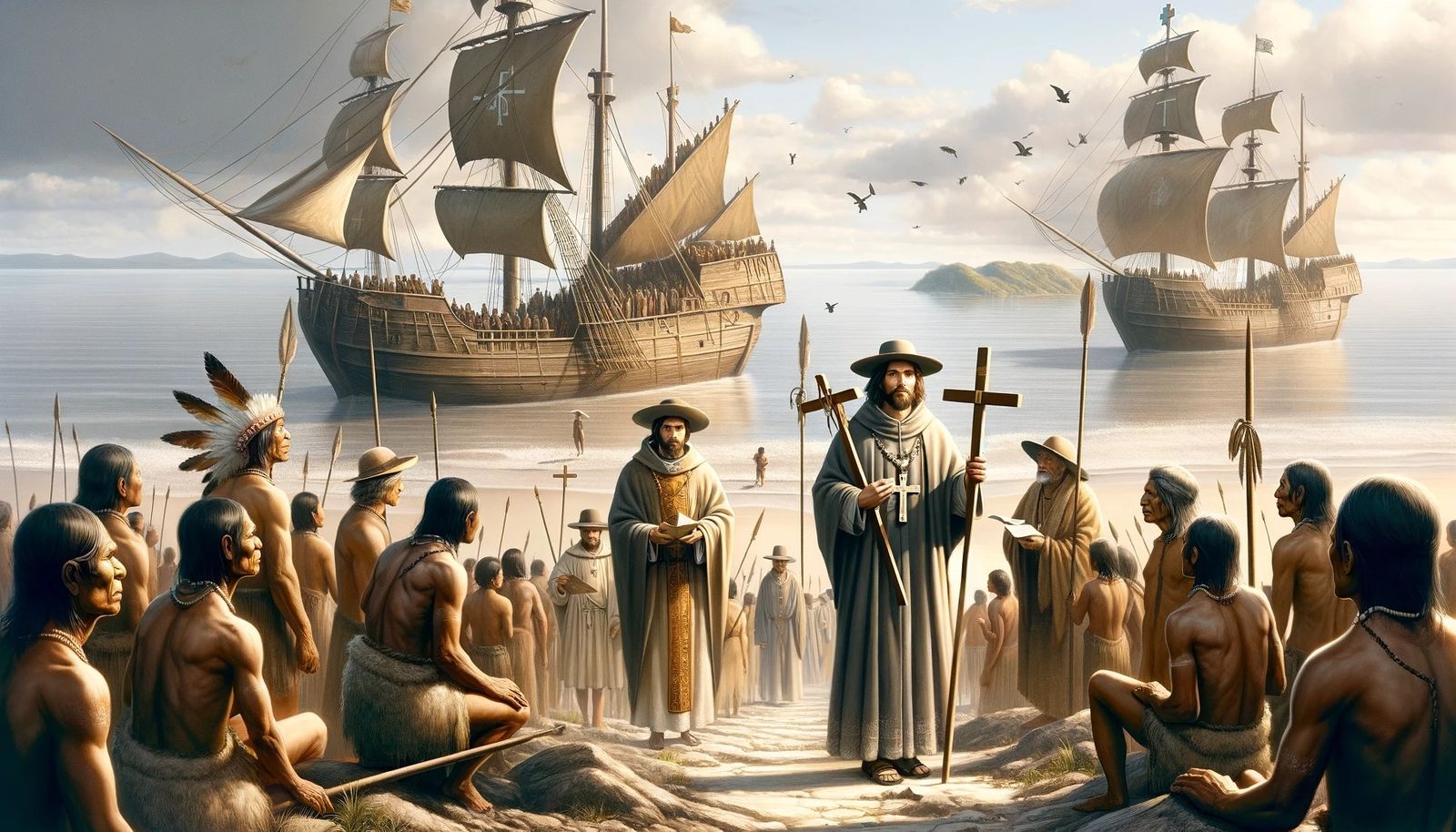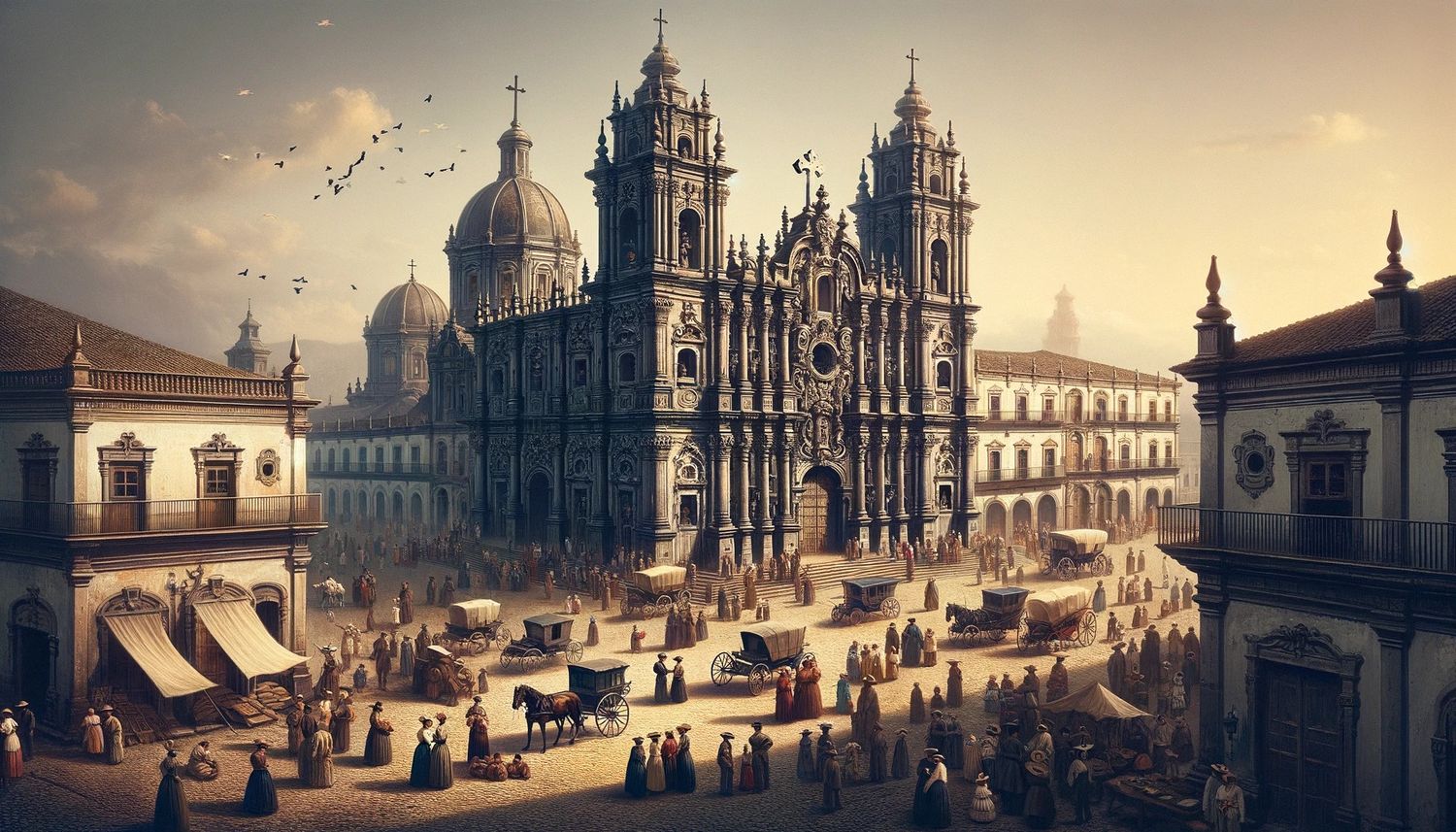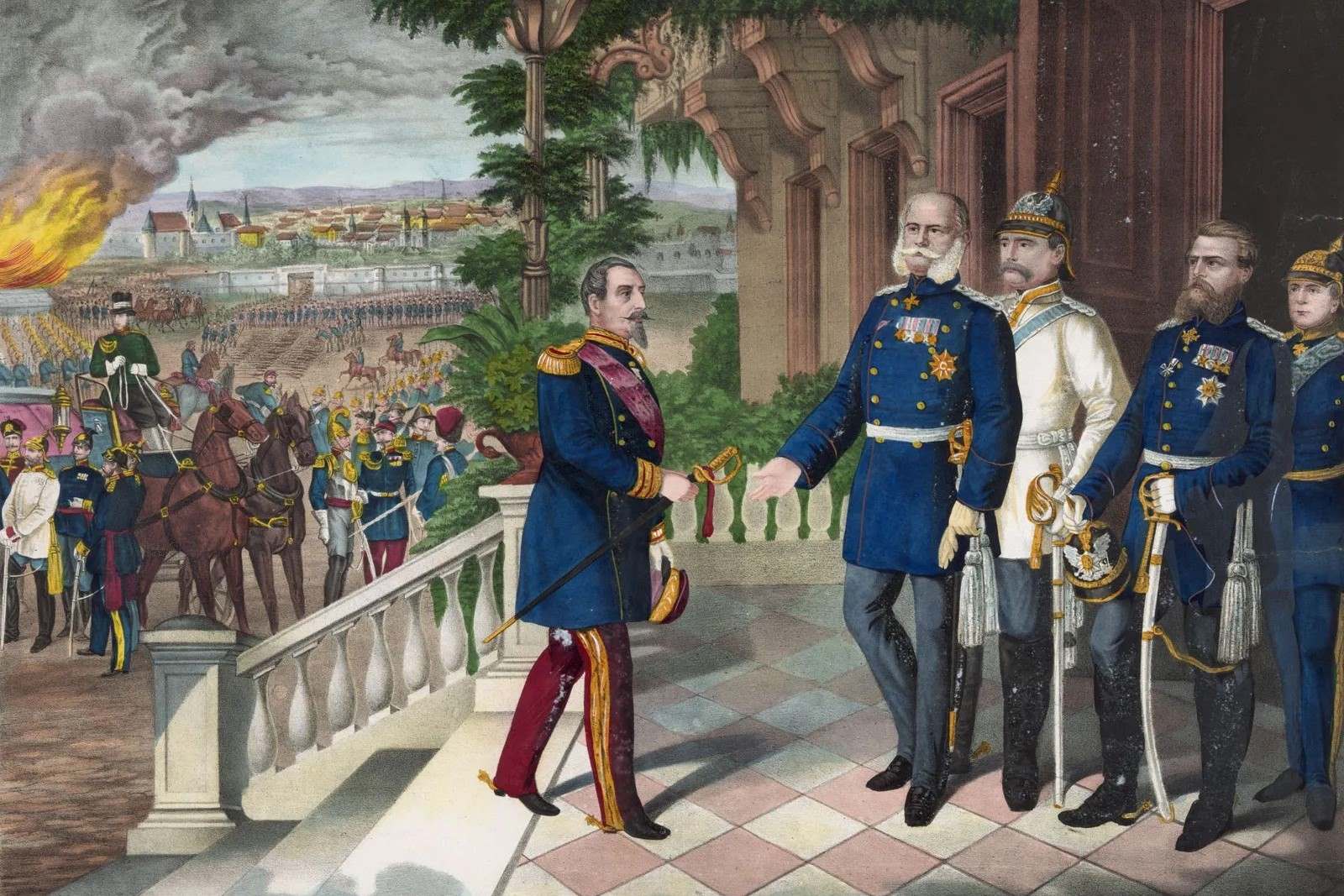Home>Theology and Spirituality>How Did Catholicism Affect Spain’s Rule In The Americas?
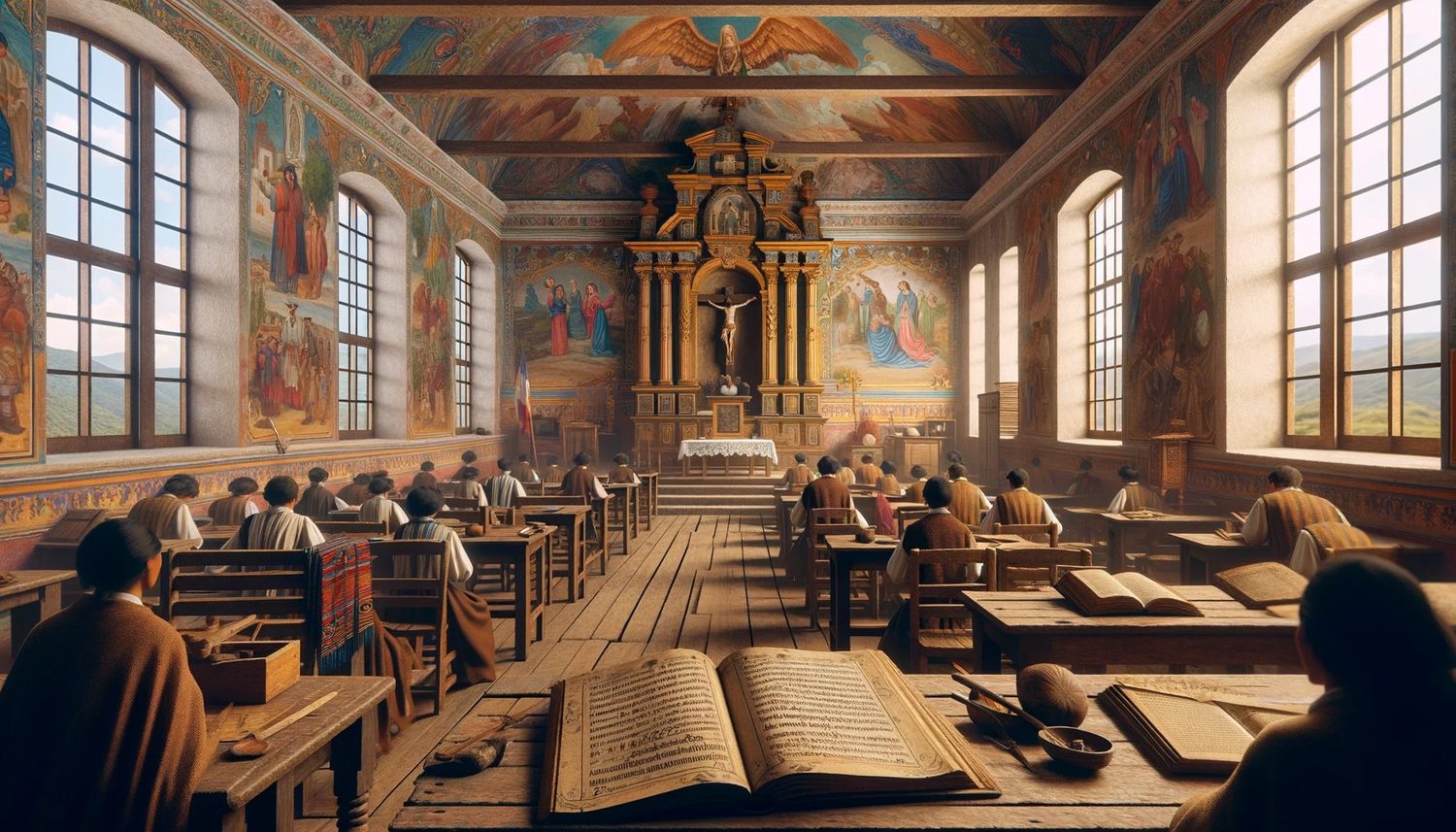

Theology and Spirituality
How Did Catholicism Affect Spain’s Rule In The Americas?
Published: February 18, 2024
Peter Smith, Editorial Director at Christian.net, combines deep insights into faith, politics, and culture to lead content creation that resonates widely. Awarded for his contributions to religious discourse, he previously headed a major organization for religious communicators, enhancing dialogue on faith's societal impacts.
Explore the impact of Catholicism on Spain's colonial rule in the Americas and its influence on theology and spirituality. Understand the historical significance and cultural implications.
(Many of the links in this article redirect to a specific reviewed product. Your purchase of these products through affiliate links helps to generate commission for Christian.net, at no extra cost. Learn more)
Table of Contents
Introduction
The impact of Catholicism on Spain's rule in the Americas is a complex and multifaceted topic that delves into the intersection of religion, power, and colonization. As we explore this subject, it becomes evident that Catholicism played a pivotal role in shaping the dynamics of Spanish conquest and governance in the New World. From the spread of the faith to its influence on social, economic, and political structures, the imprint of Catholicism on Spain's rule in the Americas is profound and far-reaching.
The arrival of Spanish conquistadors in the Americas marked the beginning of a transformative era, characterized by the encounter between European and indigenous cultures. At the heart of this encounter was the introduction of Catholicism, which served as a potent tool for the Spanish crown to assert its authority and extend its influence across the newly discovered territories. The fusion of religious zeal with imperial ambitions created a potent force that shaped the course of history in the Americas.
As we delve into the intricate tapestry of Catholicism's impact, we will uncover the ways in which the spread of the faith intersected with the mechanisms of Spanish conquest and colonization. From the encomienda system to the conversion of indigenous peoples, Catholicism permeated every aspect of Spanish rule, leaving an indelible mark on the social, cultural, and political landscape of the Americas.
In this exploration, we will navigate the complex terrain of religious imperialism, examining how Catholicism became intertwined with the structures of power and governance established by the Spanish in the New World. By shedding light on the multifaceted dimensions of this historical phenomenon, we gain a deeper understanding of the enduring legacy of Catholicism in shaping Spain's rule in the Americas.
The Spread of Catholicism in the Americas
The spread of Catholicism in the Americas was a pivotal aspect of Spain's rule in the New World. Following the arrival of Christopher Columbus in 1492, Spanish explorers and missionaries embarked on a mission to propagate the Catholic faith among the indigenous populations of the Americas. This endeavor was deeply intertwined with the broader objectives of Spanish expansion, as the crown sought to consolidate its influence and extend its dominion over the newly discovered territories.
The propagation of Catholicism in the Americas unfolded through a multifaceted approach that combined evangelization, religious instruction, and the establishment of ecclesiastical institutions. Spanish missionaries, including members of religious orders such as the Franciscans, Dominicans, and Jesuits, played a central role in disseminating the tenets of the Catholic faith among the indigenous peoples. They ventured into remote regions, often enduring arduous journeys and facing formidable challenges, to bring the message of Christianity to the native populations.
The spread of Catholicism was not merely a religious undertaking; it was intricately linked to the process of colonization and the assertion of Spanish authority. Missionaries worked in tandem with the Spanish military and colonial administrators, contributing to the broader project of subjugating and assimilating indigenous communities. The establishment of missions, churches, and religious schools became focal points for the dissemination of Catholic teachings and the acculturation of indigenous peoples into the Spanish colonial framework.
Furthermore, the spread of Catholicism in the Americas was accompanied by the introduction of religious rituals, iconography, and practices that reflected the fusion of European and indigenous belief systems. This syncretic process, while aimed at Christianizing the native populations, also incorporated elements of indigenous spirituality into the fabric of Catholic worship, resulting in a unique blend of religious expression that bore the imprint of both cultures.
The impact of Catholicism's spread in the Americas reverberated across the social, cultural, and political realms, laying the groundwork for enduring religious legacies and shaping the identity of the region. The fusion of Catholicism with indigenous beliefs gave rise to vibrant religious traditions that continue to endure in Latin American and Caribbean societies, underscoring the enduring influence of Catholicism on the fabric of the Americas.
In essence, the spread of Catholicism in the Americas was not only a religious diffusion but also a manifestation of Spain's colonial ambitions, leaving an indelible mark on the spiritual and cultural landscape of the New World.
The Role of Catholicism in Spanish Conquest and Colonization
The role of Catholicism in Spanish conquest and colonization was pivotal in shaping the dynamics of the encounter between European powers and indigenous civilizations in the Americas. As Spain embarked on its quest for territorial expansion and wealth accumulation, Catholicism served as a potent ideological and institutional framework that underpinned the enterprise of conquest and colonization.
At the heart of Spanish conquest lay the intertwined objectives of territorial acquisition and religious evangelization. The Spanish crown, driven by a potent blend of religious zeal and imperial ambition, sought to extend the dominion of Catholicism alongside its territorial expansion. This confluence of religious and secular motives imbued the conquest with a sense of divine mission, framing the subjugation of indigenous peoples as a righteous endeavor aimed at bringing the light of Christianity to the newly discovered lands.
Catholicism provided a moral and ideological justification for the subjugation and assimilation of indigenous populations. The doctrine of the "Requerimiento," a legal document read to indigenous peoples before asserting Spanish sovereignty, exemplified the fusion of religious and legal precepts in legitimizing Spanish conquest. It called upon the native inhabitants to embrace Catholicism and submit to Spanish authority, framing non-compliance as grounds for justifying conquest and enslavement. This fusion of religious and legal rhetoric underscored the integral role of Catholicism in rationalizing the subjugation of indigenous peoples under the guise of religious conversion.
Furthermore, the establishment of Catholic institutions and ecclesiastical hierarchies in the newly conquered territories facilitated the consolidation of Spanish control. The deployment of missionaries and the construction of churches, monasteries, and cathedrals became instrumental in extending the reach of Spanish influence and solidifying the imprint of Catholicism on the social and cultural fabric of the Americas.
The entwining of Catholicism with the mechanisms of Spanish conquest and colonization engendered a complex interplay of religious, political, and economic dynamics that shaped the course of history in the New World. The fusion of religious fervor with imperial ambitions created a potent force that left an enduring legacy on the social, cultural, and spiritual landscape of the Americas, underscoring the profound impact of Catholicism on Spain's rule in the New World.
Catholicism and the Encomienda System
The intersection of Catholicism with the encomienda system in the Spanish colonies of the Americas epitomized the complex entanglement of religious, economic, and political forces during the era of Spanish conquest and colonization. The encomienda system, established to regulate labor and tribute collection from indigenous communities, became intertwined with the religious framework of Catholicism, shaping the dynamics of power and exploitation in the New World.
Under the encomienda system, Spanish conquistadors and settlers were granted the right to extract labor and tribute from indigenous populations in exchange for protection and religious instruction. This system, ostensibly designed to facilitate the Christianization and civilization of the native inhabitants, became a mechanism of exploitation and oppression, perpetuating the subjugation of indigenous peoples under the guise of religious and paternalistic rhetoric.
Catholicism played a pivotal role in legitimizing the encomienda system, as the Spanish crown and colonial authorities justified the allocation of indigenous labor to encomenderos (grantees of encomiendas) as a means of fulfilling the religious mandate of converting the native populations to Christianity. The encomenderos, in turn, were tasked with overseeing the spiritual welfare of the indigenous communities under their charge, thereby intertwining the economic exploitation of labor with the religious imperative of evangelization.
The fusion of Catholicism with the encomienda system engendered a complex moral and ethical landscape, as the purported objectives of religious conversion and benevolent oversight became entangled with the harsh realities of forced labor, cultural subjugation, and the erosion of indigenous autonomy. The encomenderos, while professing to fulfill their religious duties, often subjected the indigenous laborers to arduous and oppressive conditions, leading to widespread exploitation and suffering.
Moreover, the encomienda system perpetuated a hierarchical social order that reinforced the dominance of the Spanish colonizers and the subordination of the indigenous populations. The entwining of religious and economic interests within this system underscored the intricate web of power relations that defined Spanish rule in the Americas, highlighting the pervasive influence of Catholicism in shaping the structures of exploitation and control.
In essence, the convergence of Catholicism with the encomienda system exemplified the complex interplay of religious ideology, economic interests, and colonial governance, underscoring the profound impact of Catholicism on the dynamics of power and exploitation in the Spanish colonies of the Americas.
Catholicism and the Conversion of Indigenous Peoples
The conversion of indigenous peoples to Catholicism stands as a defining chapter in the complex narrative of Spain's rule in the Americas. As Spanish explorers and missionaries ventured into the newly discovered territories, they embarked on a mission to propagate the Catholic faith among the indigenous populations. This endeavor was deeply intertwined with the broader objectives of Spanish expansion, as the crown sought to consolidate its influence and extend its dominion over the native inhabitants.
The process of converting indigenous peoples to Catholicism unfolded through a multifaceted approach that combined evangelization, religious instruction, and the establishment of ecclesiastical institutions. Spanish missionaries, including members of religious orders such as the Franciscans, Dominicans, and Jesuits, played a central role in disseminating the tenets of the Catholic faith among the indigenous communities. They ventured into remote regions, often enduring arduous journeys and facing formidable challenges, to bring the message of Christianity to the native populations.
The conversion efforts were not merely a religious undertaking; they were intricately linked to the process of colonization and the assertion of Spanish authority. Missionaries worked in tandem with the Spanish military and colonial administrators, contributing to the broader project of subjugating and assimilating indigenous communities. The establishment of missions, churches, and religious schools became focal points for the dissemination of Catholic teachings and the acculturation of indigenous peoples into the Spanish colonial framework.
Furthermore, the conversion of indigenous peoples to Catholicism was accompanied by the introduction of religious rituals, iconography, and practices that reflected the fusion of European and indigenous belief systems. This syncretic process, while aimed at Christianizing the native populations, also incorporated elements of indigenous spirituality into the fabric of Catholic worship, resulting in a unique blend of religious expression that bore the imprint of both cultures.
The impact of Catholicism's influence on the conversion of indigenous peoples reverberated across the social, cultural, and spiritual realms, leaving an indelible mark on the identity of the region. The fusion of Catholicism with indigenous beliefs gave rise to vibrant religious traditions that continue to endure in Latin American and Caribbean societies, underscoring the enduring influence of Catholicism on the fabric of the Americas.
In essence, the conversion of indigenous peoples to Catholicism was not only a religious transformation but also a manifestation of Spain's colonial ambitions, leaving an indelible mark on the spiritual and cultural landscape of the New World.
Read more: When Did Catholicism Start In Spain
The Influence of Catholicism on Spanish Governance in the Americas
The influence of Catholicism on Spanish governance in the Americas was profound and far-reaching, permeating every aspect of colonial administration and shaping the dynamics of power, law, and social order in the newly conquered territories. Catholicism served as a cornerstone of Spanish governance, providing a moral and ideological framework that underpinned the structures of authority and control established by the colonial administration.
At the heart of Spanish governance in the Americas was the fusion of religious and secular authority, with Catholicism serving as a potent tool for legitimizing and perpetuating Spanish rule. The establishment of ecclesiastical hierarchies, including the appointment of bishops and archbishops, intertwined the spheres of religious and political power, consolidating the influence of the Catholic Church within the colonial governance structure. The close collaboration between the clergy and the colonial authorities underscored the symbiotic relationship between Catholicism and Spanish governance, as the Church played a pivotal role in upholding the legitimacy of colonial rule and enforcing social and moral order.
Moreover, Catholicism exerted a profound influence on the legal and judicial systems implemented in the Spanish colonies. The integration of canon law, derived from Catholic ecclesiastical jurisprudence, with secular legal codes facilitated the imposition of Spanish legal norms and the adjudication of civil and criminal matters within a religiously informed framework. The ecclesiastical courts wielded significant authority in adjudicating matters related to marriage, morality, and religious orthodoxy, further entwining the influence of Catholicism with the mechanisms of justice and governance.
Furthermore, the propagation of Catholicism intersected with the process of social and cultural assimilation, as the colonial administration sought to imbue the indigenous populations with Spanish customs, language, and religious practices. The establishment of schools, seminaries, and educational institutions under the auspices of the Catholic Church became instrumental in disseminating Spanish language and culture, contributing to the acculturation of indigenous peoples into the colonial framework.
The imprint of Catholicism on Spanish governance in the Americas extended beyond the realms of religion and law, permeating the social, economic, and political fabric of colonial society. The fusion of religious and secular authority, the integration of Catholic doctrine into legal and judicial systems, and the acculturation of indigenous populations underscored the pervasive influence of Catholicism on the structures of power and governance established by the Spanish colonial administration.
In essence, the influence of Catholicism on Spanish governance in the Americas was a defining feature of the colonial enterprise, shaping the contours of authority, law, and social order in the New World and leaving an enduring legacy that continues to resonate in the cultural and historical tapestry of the region.
Conclusion
In conclusion, the impact of Catholicism on Spain's rule in the Americas was profound and multifaceted, shaping the course of history in the New World. The spread of Catholicism, intertwined with the mechanisms of Spanish conquest and colonization, permeated every aspect of colonial society, leaving an indelible mark on the social, cultural, and spiritual landscape of the region.
The propagation of Catholicism in the Americas, facilitated by Spanish missionaries and ecclesiastical institutions, became a potent tool for extending Spanish influence and consolidating the authority of the colonial administration. The fusion of religious zeal with imperial ambitions underscored the entwined objectives of territorial expansion and religious evangelization, framing the conquest as a divine mission aimed at bringing the light of Christianity to the indigenous populations.
Furthermore, the convergence of Catholicism with the encomienda system exemplified the complex interplay of religious ideology, economic interests, and colonial governance, perpetuating a hierarchical social order that reinforced the dominance of the Spanish colonizers and the subordination of the indigenous populations.
The conversion of indigenous peoples to Catholicism, while marking a religious transformation, also reflected Spain's colonial ambitions, leaving an enduring imprint on the spiritual and cultural identity of the New World. The syncretic process of incorporating indigenous beliefs into Catholic worship gave rise to vibrant religious traditions that continue to endure in Latin American and Caribbean societies, underscoring the enduring influence of Catholicism on the fabric of the Americas.
Moreover, the influence of Catholicism on Spanish governance in the Americas was pervasive, permeating every aspect of colonial administration, from the consolidation of religious and secular authority to the integration of Catholic doctrine into legal and judicial systems. The close collaboration between the clergy and the colonial authorities underscored the symbiotic relationship between Catholicism and Spanish governance, shaping the contours of power, law, and social order in the New World.
In essence, the imprint of Catholicism on Spain's rule in the Americas transcended the realms of religion and governance, leaving an enduring legacy that continues to resonate in the cultural and historical tapestry of the region. The complex interplay of religious, political, and economic forces underscores the profound and far-reaching impact of Catholicism on the dynamics of Spanish conquest and colonization in the New World, shaping the identity of the Americas in ways that endure to this day.
